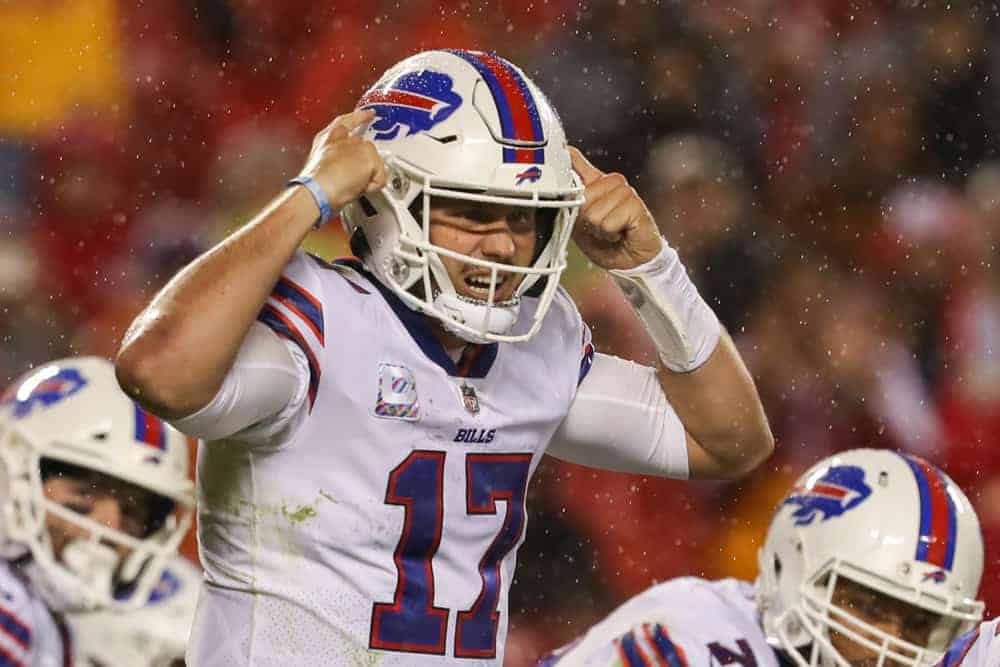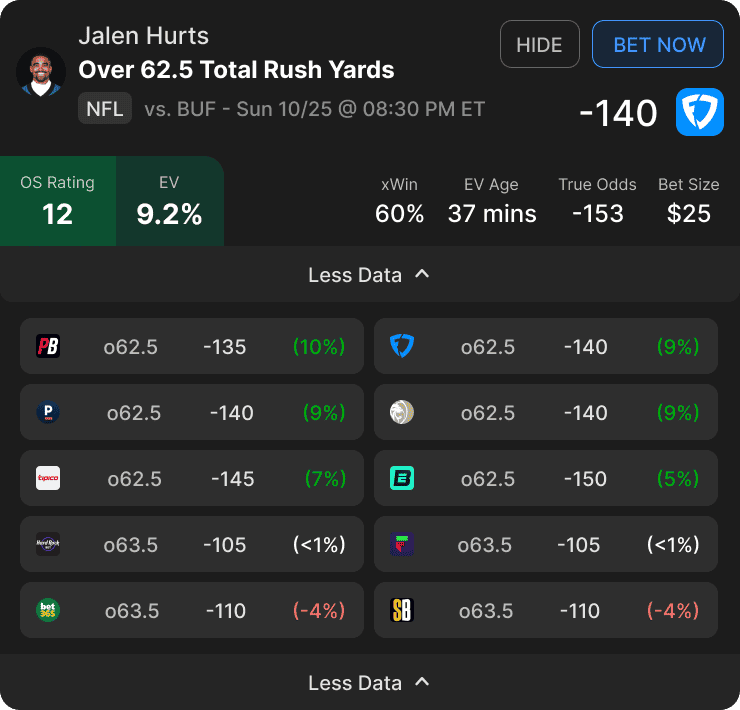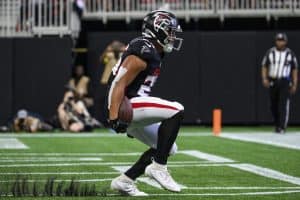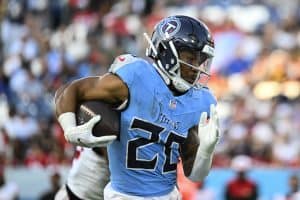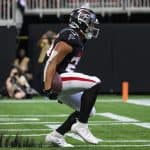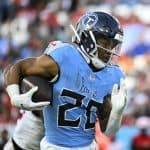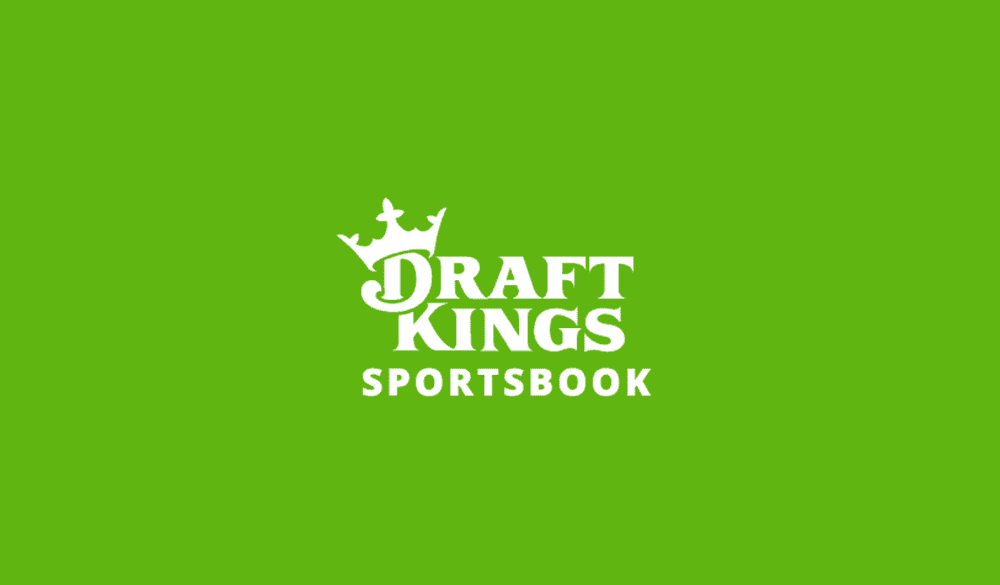Football season provides us with a number of great betting opportunities. NFL player props are one such opportunity, and they’re an excellent source of value to add to your weekly betting cards, especially since the lines tend to move more than the spread will (barring, you know, breaking injury news). If you’re just starting out with sports betting, we have other Betting 101 posts for you to check out, and I recommend that you check out Portfolio EV while you’re here! Anyway, let’s talk about how to bet on NFL player props as I dish out my tips, strategy and expert advice.
How to Bet on NFL Player Props: Tips, Strategy & Expert Advice
How to Bet on NFL Player Props
To bet on NFL player props, navigate to the “NFL” or “football” section of your sportsbook. From there, choose the game in which the player you’re hoping to bet on is playing then, select the bet you would like to place. Sportsbooks will often sort NFL player prop bets into passing, receiving, rushing and defensive categories.
Those are the basics of NFL player prop betting. Now, you may wonder, how should you bet on NFL player props, well, profitably? Good results over time are necessary for any good NFL player prop betting strategy, and the best way to attain those results is to develop a consistent method through which to estimate expected value (EV).
Expected value is simply how much of a return you expect to make on a given bet, which you can estimate by calculating the difference in probability between the price posted at the books and either a market-based estimate or a player projections-based one. If you think a bet wins more often than the books do, you think that bet has positive expected value, or +EV.
Now, let’s talk about how to calculate those market- and projections-based value estimates.
How to Find Market-Based NFL Player Prop Bets
If you’ve played fantasy football before, you’re probably familiar with projections. ESPN tells you that Tyreek Hill should generate 18.4 fantasy points because he’s projected for, say, 4.3 receptions, 93 receiving yards and 0.8 touchdowns. Those numbers are generally estimated by using a combination of Hill’s stats, his opponent’s stats and other factors. You could use those same projections to justify betting on Hill to record over 89.5 receiving yards, for instance.
We’ll talk more about projections later, but first, let’s talk about market-based betting. Instead of using stats to estimate how many yards Hill will record — or, really, how likely it is for Hill to generate X number of yards — we can use the market to accomplish something similar.
Let’s begin by walking through an example. Sportsbook A lists Hill’s receiving prop at 89.5 with the over priced at -110. Sportsbook B has the same over priced at -150, and Sportsbook C has Hill’s receiving prop at 94.5 with the over priced at -110. Sportsbook D, which you know posts sharp lines because they take a massive handle while extracting relatively little hold, has the over 94.5 priced at -105.
The above market is a very inefficient one, and it’s one you could exploit to your benefit. Let’s restate the books’ lines in sentence form to make this clearer:
- Sportsbook A: Hill has a 52.4% chance of recording at least 90 yards.
- Sportsbook B: Hill has a 60% chance of recording at least 90 yards.
- Sportsbook C: Hill has a 52.4% chance of recording at least 95 yards.
- Sportsbook D: Hill has a 51.2% chance of recording at least 95 yards.
From the above sentences, it should be clear that Sportsbook A is hanging an off-market number. The market consensus points to a much higher chance of Hill recording 90-plus yards than their odds suggest, making the over a sharp bet on their site, especially since Sportsbook D has better lines.
Using Portfolio EV to Find Market-Based NFL Player Prop Bets
But knowing which books are sharper than others — and knowing at what point your edge overcomes the hold each book, even Pinnacle, is pocketing from your wager — isn’t easy. Fortunately, Portfolio EV does the hard work for you. Let’s take a quick look at an example wager and how our product team describes each of the key terms.
Bet Size: The recommended bet size as a percentage of your bankroll. This metric is based on a fractional Kelly Criterion approach that leads to a reasonable balance of minimizing risk of ruin while maximizing potential reward.
EV: An abbreviation for “expected value,” this metric estimates the long-term profitability of a wager by taking into account the probabilities/payouts associated with each potential outcome.
xWin: The probability of winning the bet implied by the Sharp Sportsbook Algorithm true odds.
OS Rating: The OS rating provides a rating for each +EV bet. An OS rating above 20 signifies an exceptional bet. Ratings between 10 and 20 are highly favorable bets. Finally, a rating between 0 and 10 indicates a solid bet. We factor in the EV, expected win, bet size, and negative geometric drag to calculate this rating.
Hold: The synthetic hold across the entire market, which is the loss a bettor would sustain if he bet both sides of the market to win equal amounts. The larger the hold, the more difficult it is to beat that market.
True Odds: Odds that represent the real statistical probability of any outcome in a particular sporting event.
How to Find Projection-Based NFL Player Prop Bets
If you favor making projection-based bets — or you just want to factor projections in when considering your market-based options, a thorough understanding of NFL statistics is crucial. Unlike sports like hockey, baseball and basketball, the short season inherent to football makes a reliance on mere averages difficult, increasing the importance of peripheral stats.
Because NFL player props range from a quarterback’s total passing yards to a defensive end’s total sacks, we need to talk about statistics in broad categories. We’ll discuss traditional stats, also known as counting stats, which you can readily find in a box score. We’ll also discuss advanced stats, opportunity stats and opponent stats — along with some notes on injury reports.
Traditional Stats | Expert NFL Player Prop Strategy & Advice
These stats are the ones you’re probably the most familiar with — and, ultimately, they’re the ones you’ll probably end up betting on. While some advanced stats like catch probability are useful to understand what should’ve happened, we’re all betting on what actually happens, so knowing about how we understand actual outcomes is crucial.
If you’re reading this article, you probably already have a basic understanding of passing yards, sacks and the like. I won’t bother defining them here. The only note I’ll make is that you should understand what counts as a rushing or passing yard — for example, in college, a sack is tracked as a loss of rushing yards (and is credited to the player); in the NFL, a sack is credited as a loss of team passing yards (but isn’t credited to the player).
Beyond knowing what traditional stats are, you should have an understanding of means and medians if you’re hoping to make projections based upon them. Let’s say we’re three games into the season and Rashid Shaheed is averaging 75 receiving yards per game. His receiving yardage prop for Week 4 opens at 55.
Based upon Shaheed’s mean, or average, performance, you may see the 55 as a low-ball. But let’s dig a bit deeper. Say Shaheed was averaging 75 yards per game with individual game totals of 150, 40 and 35. While his mean clocks in at 75, his median sits at just 40 — far less compelling. That would give you the same 17.5-yard edge, but this time, for the under.
I encourage you to think in terms of ranges of outcomes when attempting to project a player’s actual output. In this example, a 55-yard showing is easily within Shaheed’s range of outcomes — but how likely is it? You can use a player’s production from previous seasons (or, better yet, their opportunity stats) to better estimate the probability of the outcomes within their range.
Advanced Stats | Expert NFL Player Prop Strategy & Advice
While traditional stats tell us what happened, advanced stats (and expected stats) can help us better understand what should’ve happened. Players can get lucky or unlucky, and that luck can have a massive impact upon their actual performance. In our Rashid Shaheed example, let’s say he made a great (but improbable) catch on the sidelines that he turned into a 75-yard gain.
Using a stat like improbable completions, we can tall just how lucky that receiver (or quarterback) got. Sure, a player who makes one improbable completion could just be very talented and capable of making more of them in the future, but the odds are generally against this being the case. That’s why they’re called improbable, after all.
Over a larger sample, we can get a sense of which players are best at making unlikely plays. A stat called completion percentage over expected (CPOE) is a great way to measure this over the long term for quarterbacks. That metric is calculated by taking a quarterback’s actual completion percentage and subtracting what the expected outcome of those throws would be over the long term.
Quarterbacks with high CPOEs are likelier to keep getting “lucky” over the long term, so if you see one improbable completion from them, chances are you’ll see them produce another. However, if a quarterback with a low CPOE makes a great improbable completion, the chance of a recurrence is far lower.
Being able to distinguish when a player’s production stems more from luck than from skill is especially important when placing NFL player prop bets. If books react too quickly to massive — but lucky — games from players, we can usually find value on their unders. The opposite is also true — if a book doesn’t react enough to a talented player that many think has just been getting lucky, we can usually find some value on their overs.
Opportunity Stats | Expert NFL Player Prop Strategy & Advice
Opportunity stats, also known as volume stats, are, with some exceptions, mostly a subset of counting stats. These metrics can tell you how many chances a player got to generate yards or score touchdowns. The most obvious are carries and targets (which we can filter by location on the field to determine red-zone volume), but snap counts, snap shares, routes run and route participation rate all offer meaningful insight.
Obviously, players who see the field more tend to gain more yards and score more touchdowns, but red-zone filters, game situation splits, active teammate splits and volume shares can help us understand what a player’s role is on their team. For instance, a backup running back may see a ton of action if the starter gets injured or their team wins in a blowout, but if we know their usage came in those situations, we can better see their production as an outlier.
Even a team’s passing play percentage and rushing play percentage can help us find value on the player prop markets. If we know that a team uses a run-heavy scheme, and we also know they’re massive favorites to win, we might be able to find some value on the under for their quarterback’s passing yardage props.
Opponent Stats | Expert NFL Player Prop Strategy & Advice
One of most crucial parts of any profitable NFL player prop betting strategy is its integration of a player’s opponent into their projection. Even if Tyreek Hill opens the year by averaging 120 receiving yards per game, he probably shouldn’t be projected for another 120 against the NFL’s best receiving defense. But how do we figure out who the good defenses are — and how they’ll affect the player in question?
Opponent stats include the total yards they’ve allowed, the yards they’ve allowed per play, the types of production (passing, receiving, rushing, etc.) they’ve allowed and that production’s distribution on a by-position basis. For instance, Hill might be facing the NFL’s No. 1 receiving defense in total receiving yards allowed, but that defense could be allowing the most yards per reception — the teams they’re facing just opt to run the clock out after building an early lead.
In another example, that defense could be completely shutting down wide receivers while allowing, say, 100 receiving yards per game to tight ends. That would still be good for the league lead in overall receiving yards per game, but it wouldn’t make a bet on the over for a tight end playing alongside Hill also a bad bet. In fact, that bet would probably be a pretty good one.
Those are extreme illustrations, but they speak to the value of granularity and working on a play-by-play, position-by-position basis. Advanced team stats like expected points added (EPA) and defense-adjusted value over average (DVOA) can help us form more complete assessments of NFL defenses, and I recommend you dive into them before firing off a bunch of NFL player prop bets.
How to Use the NFL Injury Report
Few things can affect players’ output more than injuries. Whether it’s the player in question getting hurt himself or a teammate missing time with an injury, an awareness of who is missing is pivotal to profitable NFL player prop betting, and no strategy can succeed without it.
While sportsbooks will rarely post lines for players they think won’t suit up (and, by extension, will rarely post lines for their teammates), this can sometimes happen, and that can create openings for us to exploit.
For example, books may open the bidding for Tyreek Hill on the receiving yardage market at 99.5 if Jaylen Waddle is a game-time decision. Say that we know Hill averages 120 receiving yards per game without Waddle but only 80 per game with him.
The 99.5 would make sense if Waddle were truly 50/50. However, assuming that Waddle will either play in full or won’t play at all, we can get an edge on the books if we find out his status first — or if we can correctly anticipate what his status will be.
While approximating injuries is difficult, keeping a close eye on beat reporters’ X accounts, teams’ injury reports and players’ social media pages can all prove helpful in finding an edge — albeit slight — on NFL player prop markets.
Portfolio EV NFL Tools & Tips
Looking for more NFL betting advice? OddsShopper’s experts are here to break down this NFL season — make sure to check out the rest of our NFL articles. Still need more NFL player prop tips and advice? Subscribe to Portfolio EV for our daily +EV NFL bets!
